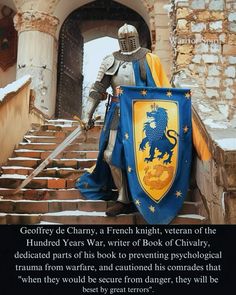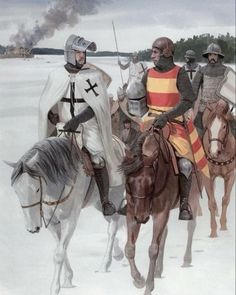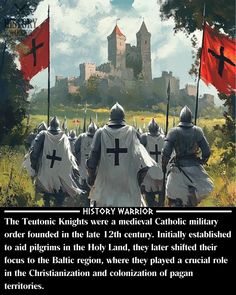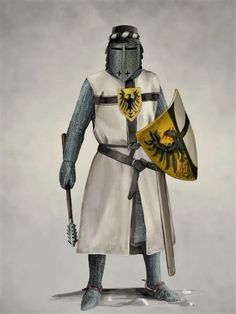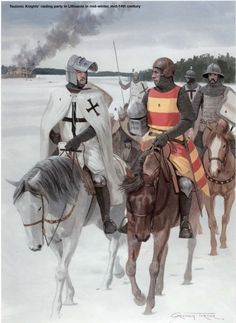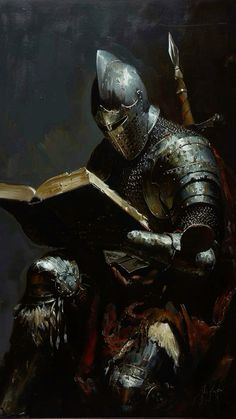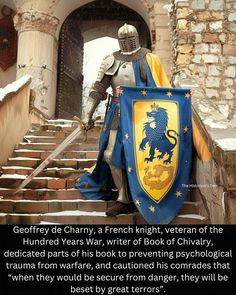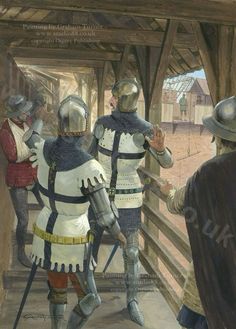Knights Orders
A military order is a Christian religious society of knights. The original military orders were the Knights Templar, the Knights Hospitaller, the Order of Saint James, the Order of Calatrava, and the Teutonic Knights. They arose in the Middle Ages in association with the Crusades, both in the Holy Land, the Baltics, and the Iberian peninsula; their members being dedicated to the protection of pilgrims and the defence of the Crusader states. They are the predecessors of chivalric orders.
322 Pins
·1w

Geoffrey de Charny, a quintessential figure of the fourteenth century, authored “The Book of Chivalry.” Written during the Hundred Years War, this pragmatic chivalric manual provides insights into knighthood. It delves into the essential aspects of medieval knighthood, revealing what one knight absorbed from the world of ideas around him, what he rejected, and what he added based on his experiences in camp, court, and campaign. Charny’s work sheds light on the psychological toll of warfare, addressing the “great terrors” and dangers faced by knights, including wounds and capture. Gutierre Diaz de Gamez, writing later, lamented that knights had to suppress their fear when going into battle, emphasizing the duress under which they operated.
In 1230, Grand Master Hermann von Salza, Leader of the Teutonic Knights, together with King Conrad I of Poland, launched the Baltic Crusade against the Baltic Countries. Immediately after this expedition, the order established an independent monastic state in the occupied Baltic States. Subsequently, they occupied Courland, Livonia and Estonia. Then the King of Poland accused the sect of occupying their lands.
The decline of the Teutonic Order
The decline of the Teutonic Order began after its defeat at the Battle of Grunwald in 1410 against a coalition of Polish and Lithuanian forces. This battle weakened the Order’s power and marked the beginning of its territorial losses and diminishing influence. By the mid-15th century, the Order's power had waned significantly, and in 1525, the last Grand Master, Albert of Brandenburg, secularized the Order’s remaining lands, converting them into the Duchy of Prussia under Polish suzerainty, marking the end of the Teutonic state.
Over several decades, the Teutonic Knights expanded their rule over Prussia
Over several decades, the Teutonic Knights expanded their rule over Prussia, imposing Christianity, establishing castles, and building cities such as Königsberg (now Kaliningrad). Their military campaigns, marked by brutal tactics, led to the subjugation of the Prussians and the establishment of a state governed by the Order. By the early 14th century, the Teutonic Order controlled significant portions of modern-day Poland, Lithuania, Latvia, and Estonia.
One of eight paintings I created for the Osprey book ‘Teutonic Knight’
Heinrich von Plauen, commander of the Teutonic Knights' defences at Marienburg Castle, calms his companions as a missile from one of the Polish-Lithuanian siege weapons crashes through the roof during the siege that followed the battle of Tannenberg in 1410.

